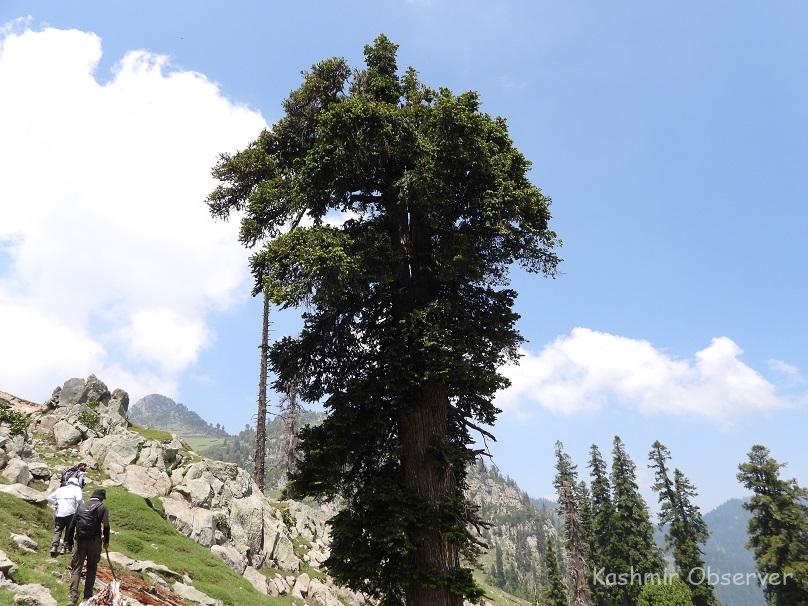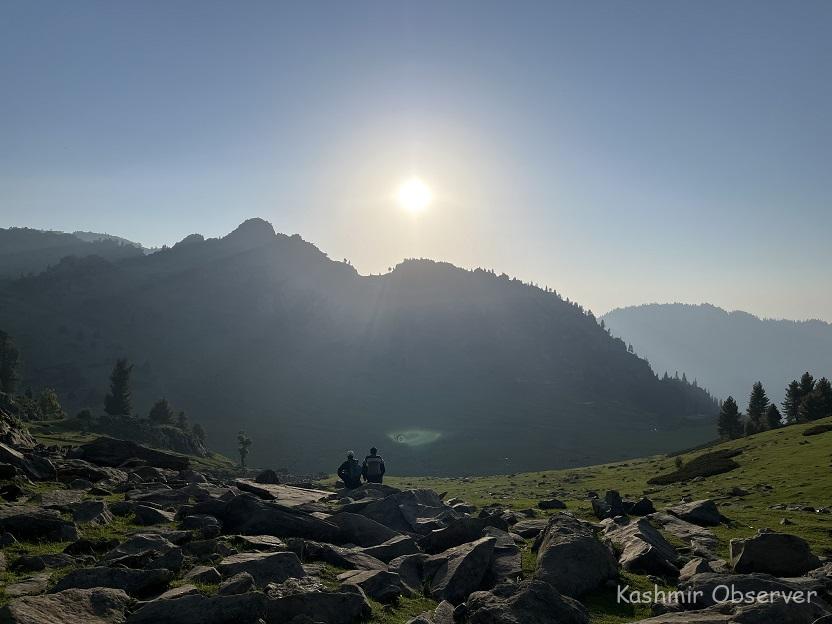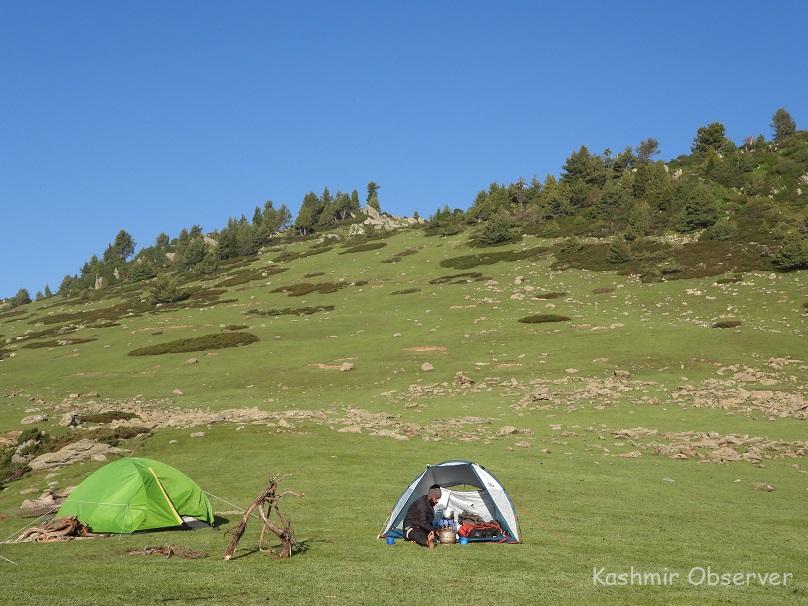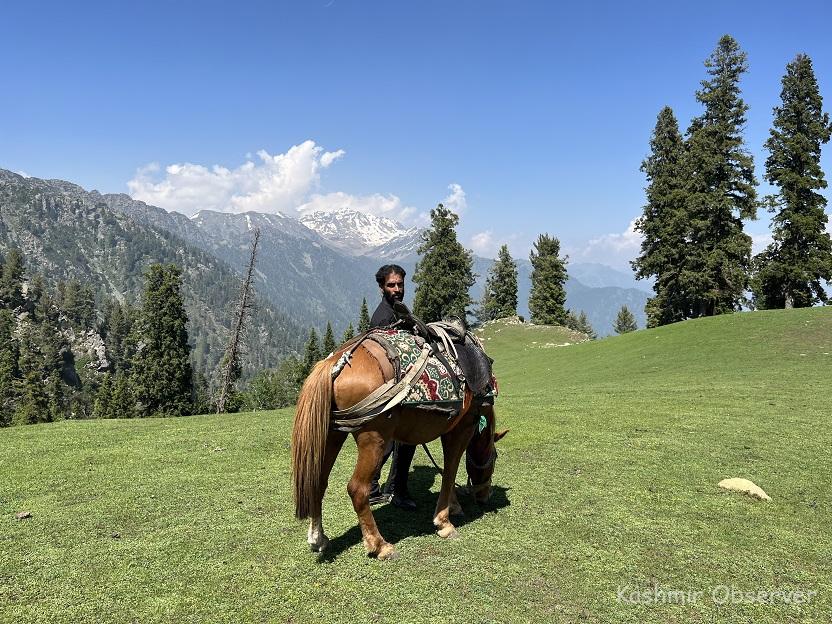
By Parvaiz Bhat
Until a few years back, trekking to Kashmir’s alpine areas was hardly something which fascinated the locals of Kashmir. The number of adventure enthusiasts who would undertake arduous journeys to the mountains was very small. Not anymore.
In recent years, especially after the COVID-19 pandemic, there has been a significant increase in the number of treks to Kashmir’s idyllic mountain areas.
As more and more adventure enthusiasts venture out in the highland pastures and glacial lakes, possible pitfalls and potential plastic pollution in forests is raising concern among environmentalists.
The sharp increase in expeditions to alpine areas being now undertaken by youth has pleasantly surprised the long-time trekkers. They see it as a positive trend and are hopeful that it will ultimately be helpful in conserving the forest resources with more and more youth getting familiarized with the health and recreational benefits of mountain biodiversity.
But as trekking requires more physical strength, mental endurance, and navigation skills as it often involves more difficult terrain and longer trips with heavier loads experts are of the view that new trekkers, even if they trek once a year, need to be mindful about the possible dangers involved.

“The fact that more and more youth are now turning to nature for health and other benefits is a welcome development. And it is particularly important in a place like Kashmir where people have gone through rough patches for over three decades,” said Muhammad Aslam, a mountaineer from north Kashmir who has been on various trekking expeditions in the past 12 years.
But, he cautioned that people need to be physically fit and aware of the challenges involved in trekking. “Besides being physically fit, a trekker aspiring to be a regular trekker, needs to know that trekking involves other compromises as well. For example, spending a lot of time away from your family.”
And, he said, sometimes trekking to top peaks can be dangerous as well. Quoting the example of two trekkers who died after falling into a crevice of Kolhai glacier in September 2018, he emphasized that trekkers also need to make themselves aware about extreme dangers involved in alpine adventures.
Mukhtar Ahmad, deputy director meteorological department in Srinagar, said that upper reaches are always vulnerable to natural hazards especially in inclement weather which makes it extremely important for people to be informed about weather, windstorm and lightning forecast forecasts. “I understand that people who go trekking check weather forecasts before they begin their journey. But, they should gather this information meticulously and carefully,” Ahmad told Kashmir Observer.

While sharing his views, Tanveer Khan, an ardent trekker and president of an active trekking group, Pathfinders, cautioned that people need to be careful while going for difficult treks. “Physical fitness and a lot of awareness about trekking and trekking routes is a must,” Khan said.
“For example, we once noticed that a group had trekked to Tosamaidan, a meadow which used to be a training ground for artillery shelling until recently, in winter. This is not recommended because if there is an unexploded shell, it will not be visible in snow,” he said.
Besides being physically fit, said the trekker from north Kashmir, someone aspiring to be a regular trekker needs to know that trekking involves other compromises as well. “For example, spending a lot of time away from your family.”
It has also been observed that some trekking routes in Budgam and Ganderbal districts have got polluted with waste. In recent months, some videos were circulating on social media wherein environmental enthusiasts were seen clearing some mess created by polluters along trekking routes.
Ashraf Bajana, a Bakerwal said that he often comes across plastic waste in forest areas, “something which has started happening in recent years.” According to Bajana, groups of youth camping in highland pastures is now a common sight. “Earlier, we would not see such a large number of people coming and staying in areas where we live with our herds in summers,” he said.
Interestingly, growing popularity of trekking has encouraged Jammu & Kashmir’s forest and tourism departments, to include trekking as one of the options for tourists from outside and within Kashmir. The Department of Forest, Ecology & Environment has opened up its existing infrastructure and resources of the department including rest houses, inspection huts to adventure tourists and wildlife enthusiasts.
Around a dozen trekking routes leading to different wildlife conservation reserves have been created by the forest department “using forest resources only (for example making a bench for resting somewhere using a fallen tree); not any material from outside forests.”

The department has opened over 70 forest rest houses and inspection huts in Kashmir and Jammu regions for hosting trekkers. “These guest houses are located in idyllic settings and were, so far, only being used by forest officers during official tours, but now they are open for nature lovers and trekkers,” said a forest official. The trekking avenues range from short day-long treks up and down mountain slopes, to long-trans-mountain traverses involving a week of trekking and camping in the wilderness. These trekking routes pass through scenic splendors, with wild fauna and flora.
“There is a lot of potential for adventure tourism in alpine areas. So, we are trying to use our existing infrastructure and involve local communities near the end-points so that their infrastructure and services can also be used by eco-tourists or trekkers,” the official said.
“There is a growing realization all over the world that the relationship of humankind with nature is breaking. That is why the emphasis is on restoration of ecosystems and the decade from 2021 to 2031 has been declared as the decade for ecosystem restoration,” he observed and added that his department will make sure that forest areas don’t get polluted in the process.
Follow this link to join our WhatsApp group: Join Now
Be Part of Quality Journalism |
Quality journalism takes a lot of time, money and hard work to produce and despite all the hardships we still do it. Our reporters and editors are working overtime in Kashmir and beyond to cover what you care about, break big stories, and expose injustices that can change lives. Today more people are reading Kashmir Observer than ever, but only a handful are paying while advertising revenues are falling fast. |
| ACT NOW |
| MONTHLY | Rs 100 | |
| YEARLY | Rs 1000 | |
| LIFETIME | Rs 10000 | |











